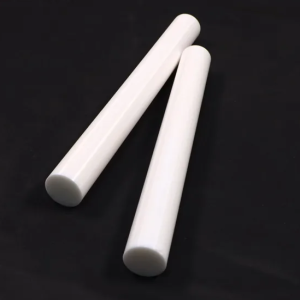Discover Premium Ceramic Products | Durability & Elegance United | Advanced Ceramics
Industrial Ceramics: Charging Past $200 Billion by 2025
(The Global Industrial Ceramics Market Size Is Expected To Exceed Us$200 Billion In 2025)
So you heard the buzz? Industrial ceramics are rocketing past a cool $200 billion globally in just a couple of years. Forget the teacups and decorative tiles. This is about high-tech materials pushing boundaries everywhere, from the depths of your phone to the vacuum of space. Let’s break down this powerhouse material.
No.1 What Exactly Are Industrial Ceramics?
Industrial ceramics are tough, engineered materials. Think less pottery class, more super-material science. They are made from inorganic, non-metallic compounds. Common ingredients include oxides like alumina or zirconia, nitrides, carbides, and sometimes even silicon carbide. What makes them special? Extreme hardness, incredible resistance to heat and wear, and excellent electrical insulation. They shrug off corrosion, laugh at high temperatures, and stand strong under pressure. They are not brittle like regular pottery. Advanced processing makes them reliable for critical jobs. These properties make them irreplaceable in many demanding modern industries.
No.2 Why Industrial Ceramics Matter Now More Than Ever
The market boom isn’t random. Several powerful forces are converging. First, the relentless push for efficiency. Industries need parts that last longer and perform better under stress. Industrial ceramics deliver. Second, the electrification revolution. Electric vehicles demand high-performance components like battery insulators and power module substrates. Industrial ceramics fit perfectly. Third, miniaturization in electronics. As devices get smaller and more powerful, managing heat becomes critical. Ceramics dissipate heat brilliantly. Fourth, sustainability goals. Ceramics enable cleaner energy production and more efficient industrial processes. Finally, advancements in medical technology rely heavily on biocompatible ceramics for implants and tools. The need for speed, durability, and precision is driving adoption like never before.
No.3 How Industrial Ceramics Are Made: From Powder to Powerhouse
Creating these advanced materials is a precise art. It starts with ultra-fine, pure powders. The chosen ceramic powder is mixed with binders. This helps the particles stick together temporarily. Next comes shaping. Common methods include pressing the powder into molds under high pressure. Another method is injection molding, where the powder-binder mix is forced into complex shapes. Sometimes, slurry casting is used for thin layers. After shaping, the “green” part is very fragile. It needs careful drying to remove moisture. The real magic happens in sintering. This involves heating the shaped part in a special kiln to very high temperatures, often over 1500°C. The particles bond tightly without melting completely. This transforms the fragile shape into a dense, super-strong ceramic. Further machining or finishing might be needed for perfect dimensions and surface smoothness. Quality control is strict throughout.
No.4 Where Industrial Ceramics Shine: Key Applications
These materials are workhorses across countless sectors. They are essential where metals or plastics fail. Here’s where they make a huge difference:
Electronics & Electrical: Circuit board substrates, insulators, semiconductor components, spark plugs. They handle high voltages and heat.
Automotive & Aerospace: Brake discs, engine components, turbine blades, heat shields, sensors. They withstand extreme temperatures and friction.
Medical & Dental: Hip and knee replacements, dental implants, surgical tools. They are biocompatible and wear-resistant.
Energy & Environment: Components for fuel cells, solar panels, nuclear reactors, filters for pollution control. They endure harsh chemical and thermal environments.
Industrial Machinery: Cutting tools, wear-resistant liners, seals, bearings, pump components. They extend equipment life significantly.
Defense & Security: Armor plating, missile nose cones, sensor housings. They offer lightweight protection and durability.
No.5 Industrial Ceramics FAQs: Your Questions Answered
Let’s tackle some common queries:
1. Are industrial ceramics brittle? They can be less tough than metals under impact. But modern engineering and composite designs greatly improve fracture resistance for specific uses. They excel under steady loads and wear.
2. Why are they expensive? High-purity raw materials, complex processing (especially sintering), and precise machining drive up costs. But their long lifespan and performance often justify the investment.
3. Can they replace metals everywhere? Not yet. Metals often offer better toughness and ease of fabrication for large structures. Ceramics shine in specific high-performance niches where their unique properties are critical.
4. Are they safe? Generally, yes. Biocompatible ceramics are vital for medical implants. Industrial grades are safe when handled correctly. Processing dust requires precautions, like any fine powder.
(The Global Industrial Ceramics Market Size Is Expected To Exceed Us$200 Billion In 2025)
5. Can they be recycled? Recycling is challenging. Melting them down like metal isn’t possible. Research focuses on grinding used ceramics for filler material or finding ways to reuse sintered parts. It’s an active area of development.



